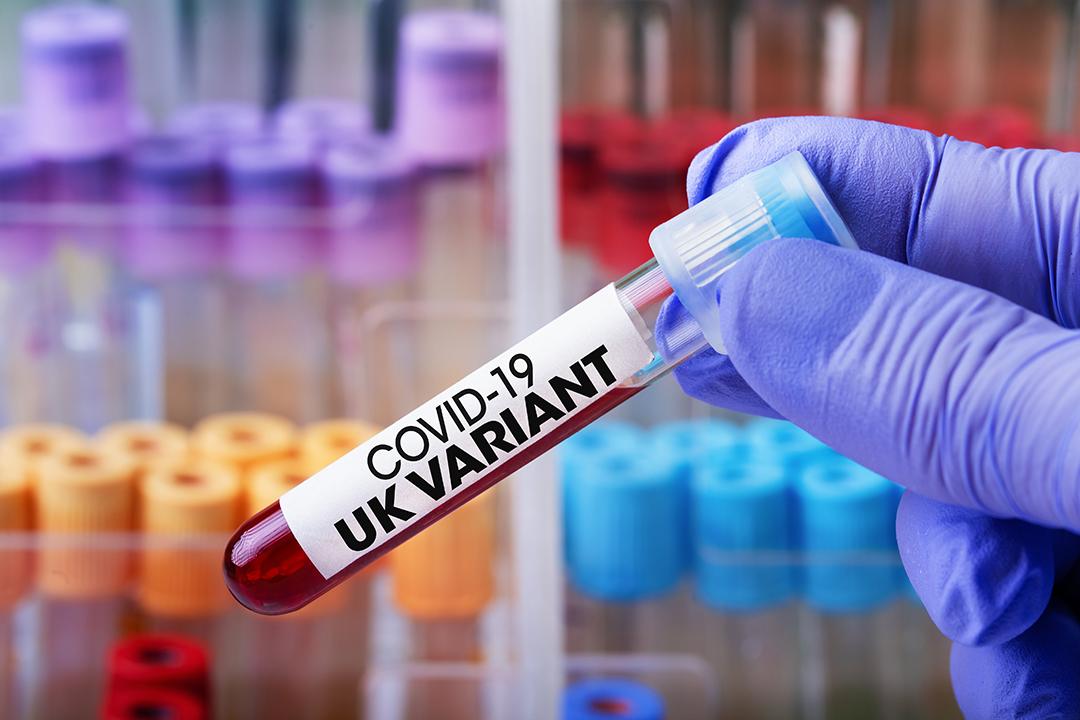
Briefing - New Coronavirus Variants
Act Swiftly with Enhanced Public Health Measures to Protect Populations
Key Facts:
-
Highly transmissible with exponential growth: the UK Coronavirus New Variant – B117 is estimated to be 40-70% more transmissible than previous strains, with community rates reported to have doubled within 4-7 days.
-
Surges in Illness and Deaths: exponential growth of the B117 New Variant has resulted in a rapid rise in daily rates to over 1000/100,000, with daily deaths of over 1000 in the UK.
-
Quickly overwhelms services: the B117 New Variant in the UK is associated with a rapid rise in community rates, overwhelming health services with a Major Incident declared in London and other regions.
-
Origins of the UK Coronavirus New Variant– B117: were first detected in Kent, South East England in September, initially spreading at low levels, with a surge in cases detected in October and November which spread to London and the South East, and rapidly seeded across the country with increased social mixing in December.
-
Global Spread of New Variant –B117: after initially being found in the UK, the new variant has already reached 22 countries in Europe, with community spread identified in the USA and Canada, and has been detected in Latin America, Asia, China and the Pacific.
Surge in UK COVID-19 positive Hospital Admissions, (Public Health England):
The New Variant B117 is associated with an exponential rise of hospital admissions (green), including Intensive Care admissions (red). The dip in week 48 reflects the impact of the ‘November lockdown.’

-
Other New Variants of Concern: the South African variant 501.V2. is associated with a surge in cases and deaths from December, and has already been detected in the UK, Ireland, Austria, Norway and Japan.
-
The origins of New Variants: mutations of the COVID-19 virus have been detected at a rate of approximately 2 per month, especially in populations with high viral loads – the natural history of epidemics is for a new virus to become more transmissible and in time (often years), less virulent.
-
How the mutation alters transmission: an increase and alteration of the external spikes of COVID-19 virus make it more ‘sticky’ meaning a lower dose is required to infect an individual and explains the increase in transmission by 40-70% which is also reflected by a rise in the Reproduction Rate of 0.4- 0.7.
-
Impact upon vaccination effectiveness: initial studies indicate that current vaccinations are still effective against the UK variant; however there are some concerns that vaccinations may be less effective with further changes to the viral spikes, as potentially seen in the South African variant – however, vaccines can be redesigned within weeks or months to match new variants.
Key Recommendations and Guiding Principles:
Act Swiftly: Convene Emergency Committees to make key decisions for responses that target vulnerable populations. The below priorities build upon the illustrated Emergency Framework:
Stop the Spread - Enhance Public Health Measures: the New Variant B117 is 40-70% more transmissible and to prevent transmission, requires enhanced testing and isolation of infected cases and their contacts, and where feasible firm adherence to existing public health measures:
- Social Distancing – of two metres plus
- Constant Cleaning – hands and touch surfaces
- Maintain Masks – indoors and for crowded spaces
- Reduce Social Mixing – between households and communities
- Restrict Travel – and test and quarantine at borders
- Interact outdoors or on-line - for work and education
- Stay at Home – and shield vulnerable groups
Vaccinate at Speed and Scale: the coming months are a race against time to maximise vaccination coverage to vulnerable populations as rapidly as possible. The new variants add further urgency to rolling out vaccines, to minimise harm and reduce the risk of further mutations that are resistant to current vaccines. Where feasible, expand supplies and organise vaccination campaigns through existing mechanisms including Community Health Services, Local Governments, Volunteer networks and the Military. Countries with existing high rates need to target high-risk populations; a wider population can be covered with an initial dose that provides 80-90% of immunity for several months. International efforts are being sought through COVAX for Global Vaccination Equity to ensure that all are protected.
Prepare Health Services to Save Lives: with surge capacity of the health sector, triage systems, re-deploy staff and buildings supplied with protective equipment, beds and respirators; regularly test and vaccinate front line workers to ensure their safety and maintain a sufficient workforce.
Enhance community resilience, security and stability: target and protect vulnerable populations; stabilise economic impacts, ensure essential services and wider security.
Communicate and Coordinate: ensure clear lines of co-ordination between sectors and geographical levels, and establish daily communications supported by social media.
Further Resources:
An Emergency Framework for Countries and Communities, for Covid-19:

Prepared by Dr. Joanna Nurse, Strategic Advisor, InterAction Council on 10th January 2021.

